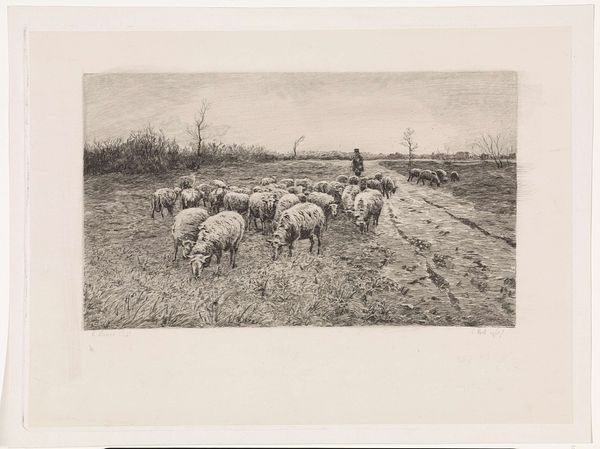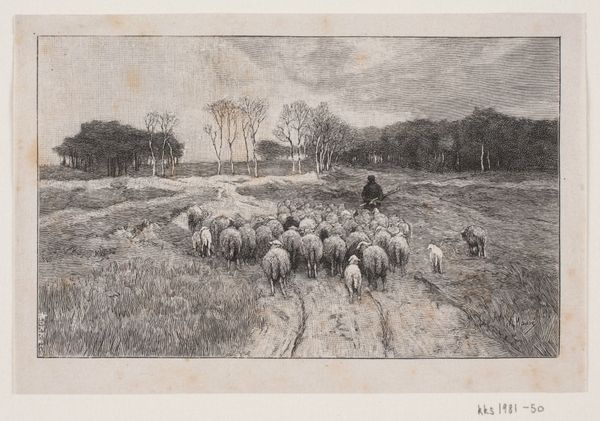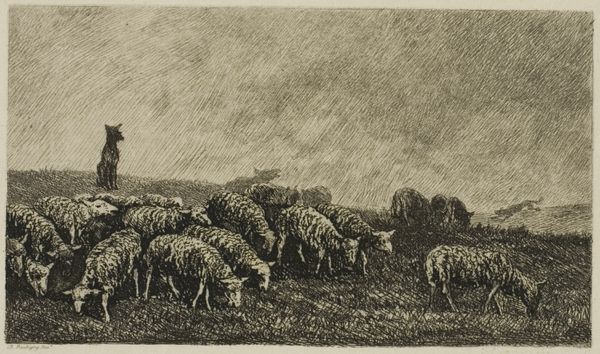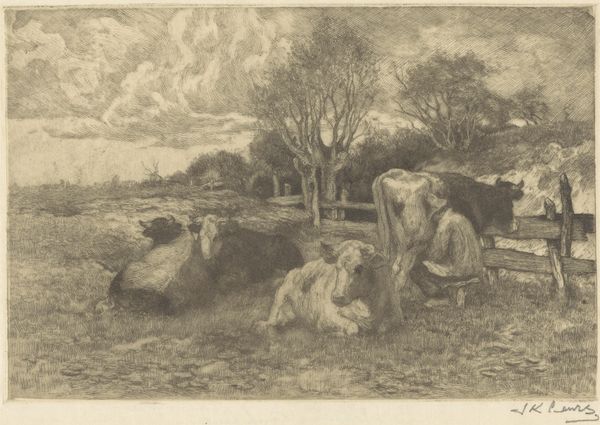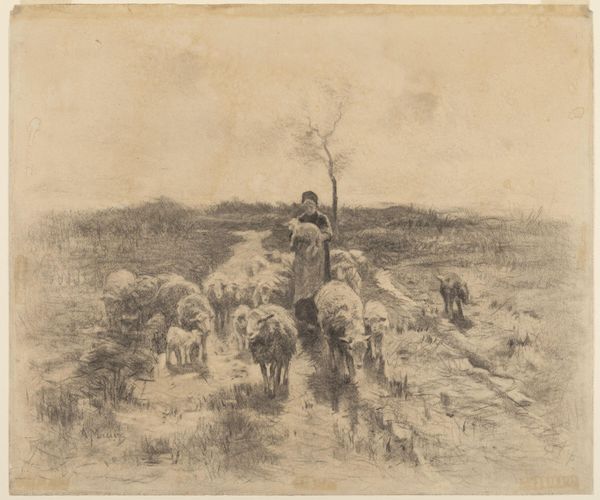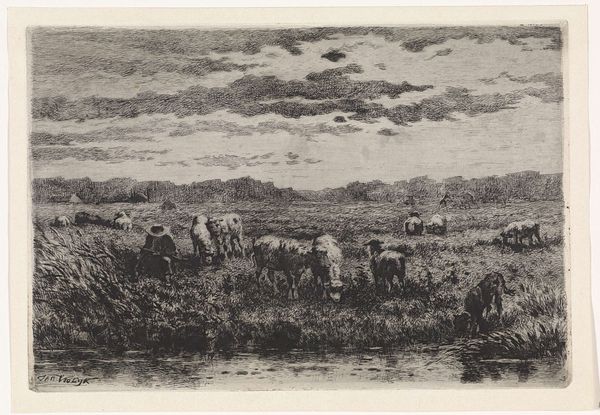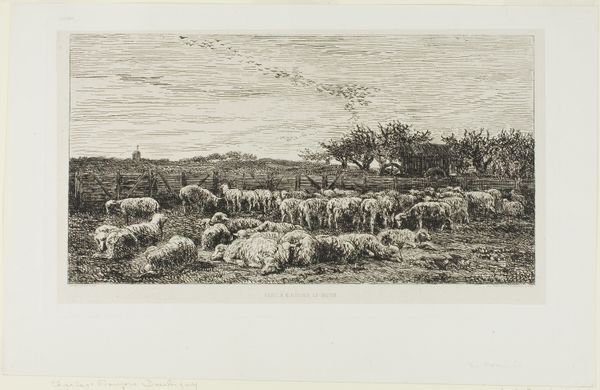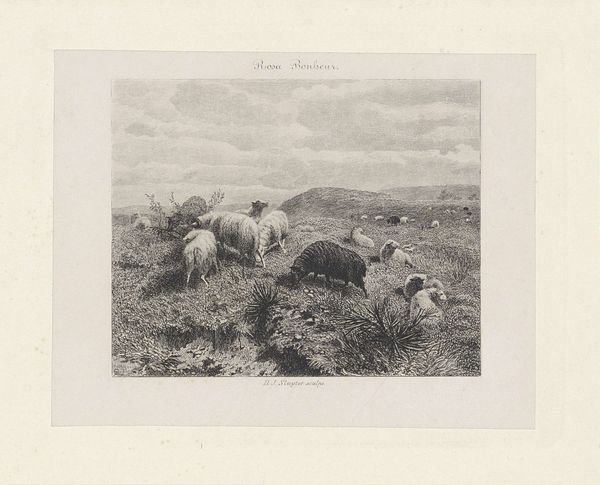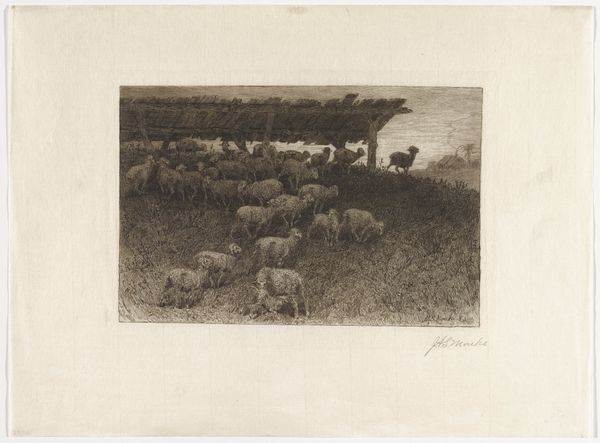
print, etching
# print
#
etching
#
old engraving style
#
landscape
#
charcoal drawing
#
genre-painting
#
realism
Dimensions: height 227 mm, width 344 mm
Copyright: Rijks Museum: Open Domain
Curator: This is Elias Stark's etching, "Herder met kudde schapen," or "Shepherd with a Flock of Sheep," dating possibly from 1889. It's currently held in the Rijksmuseum. Editor: It’s immediately striking, a rural scene rendered in what feels like painstaking detail. The overall mood is rather somber, almost melancholic. Curator: The texture and tonal range achieved through etching are particularly noteworthy. Stark’s choice of printmaking allows for the easy reproduction and widespread circulation of this rural scene, essentially democratizing the image and its commentary. Editor: Indeed. Consider the institutional context: late 19th-century Europe was experiencing rapid industrialization. Genre scenes like this, depicting the slower pace of rural life, fulfilled a need for nostalgia and a romanticized connection to the land for urban audiences. The etching medium makes it more accessible and less elitist than an oil painting, resonating with a broader public yearning for simpler times. Curator: The level of labor involved in creating an etching shouldn't be ignored either. Every line you see was carefully incised into a metal plate. Think of the artisan tradition implied in such a process—a clear commitment to his craft by Stark that in many ways mirrors the dedication he seems to see in his subjects' livelihood. Editor: I agree, and it’s fascinating to consider the politics embedded in this imagery. The image evokes a sense of timelessness. However, Stark carefully selected and presented his material, and it’s a very deliberate construction shaped to meet cultural expectations in the urban art market. Curator: So it really speaks to how we create and consume imagery. It allows many different contexts to meet each other, the working conditions to create it, its function as popular imagery, and also how it circulated for its contemporary public, not just to modern audiences like us. Editor: Absolutely. Examining Stark's work through both material analysis and its social reception gives us a far richer understanding of its lasting impact and the role such artworks play in shaping our collective memory of the past.
Comments
No comments
Be the first to comment and join the conversation on the ultimate creative platform.
